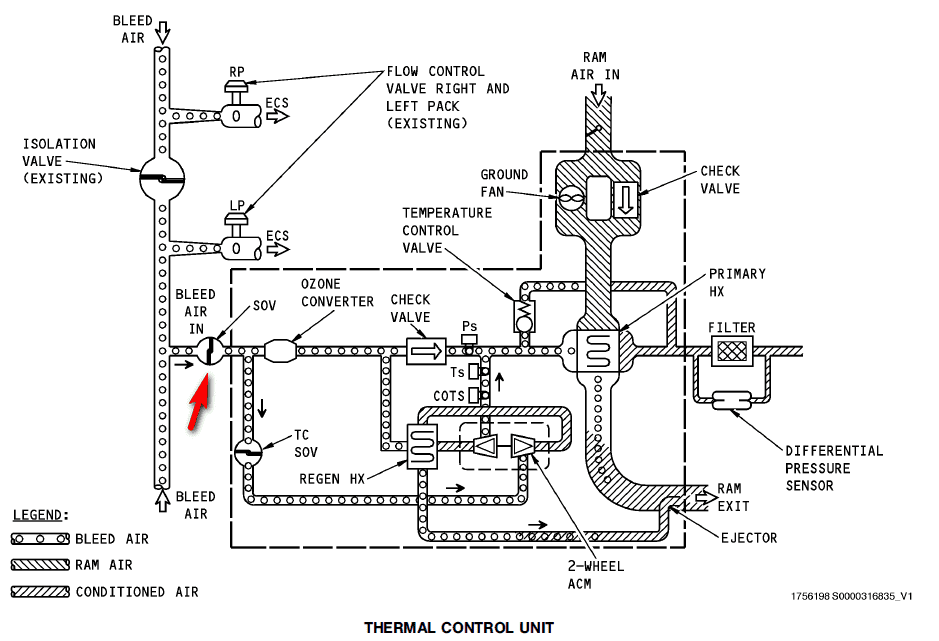2.0 INCH DIAMETER NGS SHUTOFF VALVE 3215922
一、名称
2.0 INCH DIAMETER NGS SHUTOFF VALVE
2.0英寸直径 NGS 关断活门
二、件号
3215922-1,-2,-3
三、章节号
47-32-03
四、适用机型
B737/B747/B777
五、系统
47 INERT GAS SYSTEM
惰性气体系统
六、安装位置
Underwing Wing-to-Body Fairings, Left
机翼-壳体整流罩下方,左侧
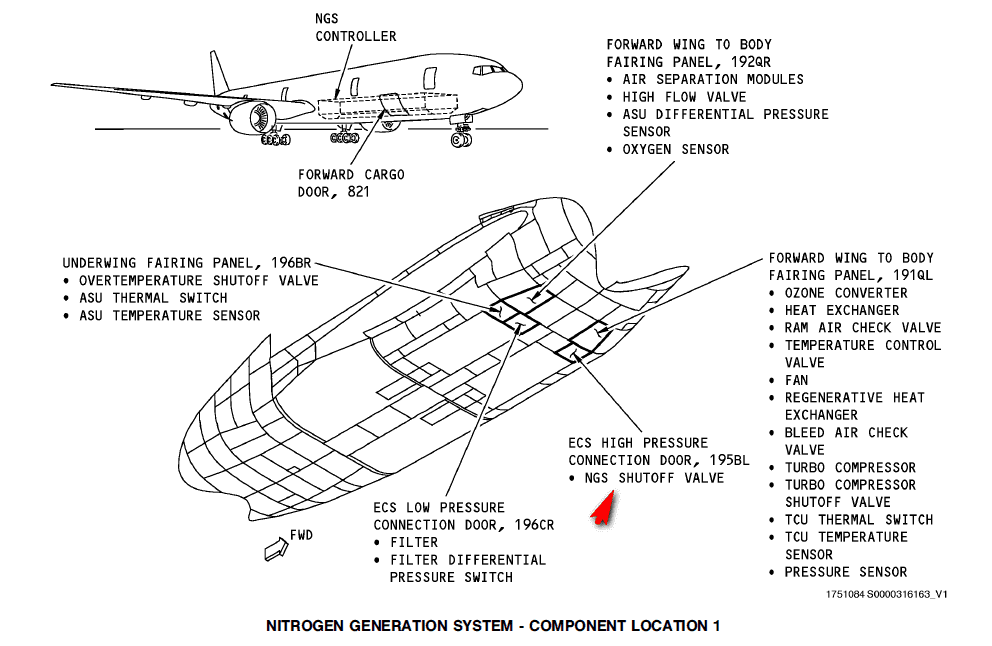
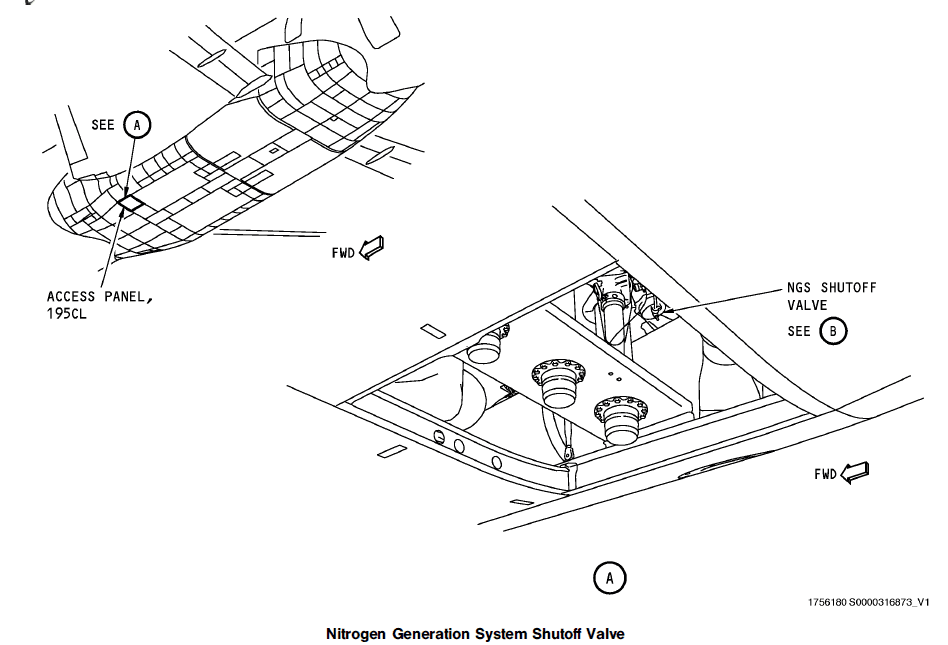
七、部件原理
Operation
工作运行
(1) The NGS shutoff valve is an electrically commanded, pneumatically actuated pressure regulating and shutoff valve. The reference pressure regulator establishes a constant gage pressure. The butterfly closure element is spring-loaded closed. A double acting, dual area, diaphragm-piston actuator positions the butterfly by comparing reference pressure to downstream pressure admitted through a downstream sense tube. A solenoid controls shutoff. The valve includes a locking manual override. The valve is shown depressurized and de-energized. Refer to Figure 2.
NGS关断活门是一种电控气动压力调节和关断活门。基准压力调节器可建立恒定的表压。蝶板关闭元件由弹簧载荷关闭。双作用双区域膜片活塞作动器通过比较基准压力和下游感应管允许的下游压力来定位蝶板。电磁阀控制关断。活门包括一个锁定手动超控装置。图中所示为活门减压和断电状态。请参阅图2。
(2) Reference Pressure Regulator Operation:
基准压力调节器操作:
(a) Inlet pressure is admitted through a filter to the reference pressure regulator. In the regulator, air flows past the poppet and seat into the sensing chamber. When the pressure downstream of the regulator reaches the set point, the force created by the sensing chamber pressure on the diaphragm tends to counteract the calibration until a force equilibrium is achieved. The regulator thus produces a regulated reference pressure spring force and the poppet moves toward the seat and decreases the pressure until a force equilibrium is achieved. The regulator thus produces a regulated reference pressure that is independent of inlet pressure. The reference pressure is then ported through the shuttle valve into the actuator closing chamber and to the base of the solenoid.
入口压力通过过滤器(气滤)进入基准压力调节器。在调节器中,空气流过提升阀芯和阀座进入感应腔室。当调节器下游的压力达到设定点时,感应腔室压力对膜片产生的力会抵消校准压力,直到达到力平衡。调节器因此产生一个调节基准压力的弹簧力,提升阀芯向阀座移动并降低压力,直到达到力平衡。调节器因此产生一个与入口压力无关的调节基准压力。基准压力随后通过梭阀进入作动器关闭腔室并到达电磁阀底部。
(3) Operation with Solenoid De-Energized:
电磁阀断电操作:
(a) When pressure is applied to the inlet and the solenoid is de-energized, the butterfly is closed as shown. The de-energized solenoid blocks reference pressure from the opening chamber of the actuator and the chamber is vented to ambient through the solenoid vent. With reference pressure blocked from the opening chamber of the actuator, the spring keeps the butterfly in the closed position. In the shuttle valve, reference pressure holds the shuttle element in the position shown, admitting reference pressure to the closing chamber of the actuator. The reference pressure will create a closing force, assisting the actuator spring in keeping the butterfly in the closed position.
当入口压力作用且电磁阀断电时,蝶板关闭,如图所示。断电的电磁阀阻止基准压力进入作动器的开启腔,并通过电磁阀通风口向环境排气。由于基准压力被阻止进入作动器的开启腔,弹簧将蝶板保持在关闭位置。在梭阀中,基准压力将梭阀元件保持在所示位置,使基准压力进入作动器的关闭腔。基准压力将产生关闭力,协助作动器弹簧将蝶板保持在关闭位置。
(4) Operation with Solenoid Energized:
电磁阀通电操作:
(a) When pressure is applied to the inlet, the solenoid is energized and the butterfly will open, opposite that shown. The energized solenoid will close the solenoid vent and admit reference pressure to the opening chamber of the actuator. Since the area of the opening diaphragm is greater than that of the closing piston and with reference pressure admitted to the actuator opening chamber, the force generated by the reference pressure acting on the diaphragm will overcome the spring force and cause the butterfly to rotate toward the open position, opposite that shown. In the shuttle valve, when the reference pressure exceeds the downstream pressure, the shuttle element is held in the position shown, admitting reference pressure to the closing chamber of the actuator. As the butterfly opens, the downstream pressure will increase. When the downstream pressure exceeds the reference pressure, the shuttle element will be translated to the position opposite that shown, admitting downstream pressure to the closing chamber of the actuator. The force generated by the downstream pressure in the closing chamber plus the force of the spring will balance the force generated by the reference pressure in the opening chamber. The butterfly will be repositioned as required to maintain the regulated downstream pressure at the value required to maintain the actuator force balance.
当入口受到压力时,电磁阀通电,蝶板打开,与所示相反。通电的电磁阀将关闭电磁阀通风口,并将基准压力引入作动器的开口腔。由于开口膜片的面积大于关闭活塞的面积,且基准压力被引入作动器的开口腔,因此基准压力作用在膜片上产生的力将克服弹簧力,使蝶板朝打开位置旋转,与所示位置相反。在梭阀中,当基准压力超过下游压力时,梭阀元件将保持在所示位置,使基准压力进入作动器的关闭腔。当蝶板打开时,下游压力将增加。当下游压力超过基准压力时,梭阀元件将移动到所示位置的反面,使下游压力进入作动器的关闭腔。关闭腔室中下游压力产生的力与弹簧产生的力将平衡开启腔室中基准压力产生的力。蝶板将根据需要重新定位,以将下游压力维持在所需值,从而保持作动器力平衡。
(5) Manual Lock Operation:
手动锁定操作:
(a) To manually lock the valve, the manual lock cap is removed to vent the actuator head. The butterfly plate is manually overridden and the cap is placed at the manual override location to lock the valve in the closed position only.
要手动锁定活门,需要取下手动锁定盖,以便排出作动器顶部的空气。手动操作蝶板,将手动锁定盖放置在手动操作位置,仅将活门锁定在关闭位置。
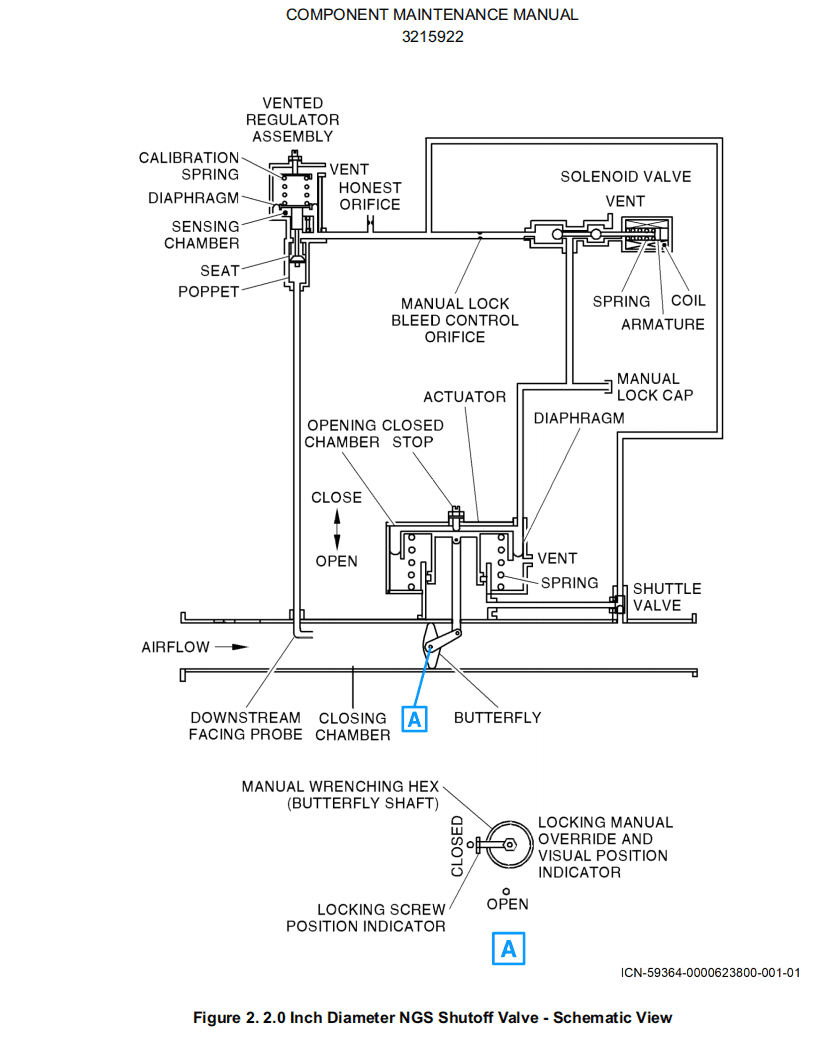
八、工作参数

九、在飞机系统中的工作原理及互联
Purpose:The Nitrogen Generation System (NGS) shutoff valve controls bleed air flow for the NGS.
用途:氮气生成系统(NGS)关断活门控制氮气生成系统的引气流量。
The NGS shutoff valve is found aft of the Thermal Control Unit (TCU), between the bleed air inlet duct and the ozone converter,above the ECS High Pressure Connection Door, 195BL.
NGS关断阀位于热控制部件(TCU)后部,引气入口管道和臭氧转换器之间,在195BL ECS高压连接器舱门上方。
Description: The NGS shutoff valve is a dual purpose pressure regulating and system shutoff valve. The NGS shutoff valve is a 2 in. (51 mm) diameter spring-loaded-closed valve. The NGS shutoff valve is pneumatically actuated and solenoid-controlled. The NGS shutoff valve will close when it is de-energized and open when energized. The NGS shutoff valve can also be manually wrenched closed and locked in the closed position. The NGS shutoff valve has an OPEN/CLOSED position indicator.
描述:NGS关断活门是一种双用途压力调节和系统关断活门。NGS关断活门是一个直径为2英寸(51毫米)的弹簧载荷关闭活门。NGS关断活门由气动作动和电磁控制。当断电时,NGS关断活门将关闭,通电时打开。NGS关断活门也可以手动拧紧并锁定在关闭位置。NGS关断活门有一个打开/关闭位置指示器。
The NGS shutoff valve functions as an overpressure regulator in the event of a bleed air system pressure regulator failure.
在引气系统压力调节活门失效时,NGS关断活门将作为超压调节器发挥作用。
The NGS shutoff valve uses a spring-loaded-closed butterflytype valve disc. The solenoid is actuated to the open position and will close when de-energized. The NGS shutoff valve opens and closes within 2 seconds.
NGS关断活门使用弹簧载荷关闭的蝶形活门板。电磁阀作动时活门位于打开位置,断电时关闭。NGS关断活门可在2秒内打开和关闭。
The bleed pressure sensor has an airtight sealed electronic circuitry housed within a corrosion-resistant steel shell. Bleed air comes from the pressure sense line and goes into the sensor. The NGS controller supplies power to the sensor which then monitors the bleed air pressure. When the bleed air pressure goes above 67 psig (462 kPa), a signal is sent to the NGS controller. The NGS controller then commands the NGS shutoff valve and the over-temperature shutoff valve (OTSOV) to close. Damage is prevented to the air separation module (ASM) and the center tank.
引气压力传感器有一个气密密封的电子电路,安装在耐腐蚀的钢壳内。引气来自压力感应管路并进入传感器。NGS控制器向传感器供电,然后传感器监测引气压力。当引气压力超过67 psig(462 kPa)时,向NGS控制器发送信号。NGS控制器随后命令NGS关关断活断活门和超温门(OTSOV)关闭。可以防止空气分离模块(ASM)和中央油箱损坏。
The NGS shutoff valves has these functions:
NGS关断活门具有以下功能:
* Regulate duct pressure to 61 ±6 psig (421 ±42 kPa) on the outlet side of the NGS shutoff valve when the inlet side duct pressure is more than 67 psig (462 kPa). The NGS shutoff valve is fully open up to 50 psig (345 kPa).
当进气侧管道压力超过67 psig (462 kPa)时,调节NGS关断活门出口侧管道压力至61 ±6 psig (421 ±42 kPa)。NGS关断活门在50 psig (345 kPa)以下完全打开。
* Shutoff the NGS system.
关断NGS系统。
The NGS receives bleed air from the pneumatic manifold. The bleed air travels through the NGS shutoff valve, into reference pressure regulator. The reference pressure regulator controls the valve operating pressure to 10 psig (69 kPa). This reference pressure then flows to the solenoid, which then flows to the opening chamber or is vented. When the controller sends a signal to close the NGS shutoff valve, the solenoid is de-energized, which closes the butterfly valve. The de-energized solenoid blocks the reference pressure to the opening chamber of the actuator. The existing pressure in the opening chamber is vented through the solenoid vent. With the reference pressure blocked to the opening chamber, the spring keeps the butterfly valve closed When the controller sends a signal to open the butterfly valve, the NGS shutoff valve is energized. This supplies 28V DC power to the solenoid valve. The energized solenoid closes the solenoid vent and allows the reference pressure into the opening chamber of the actuator. The reference pressure acting on the diaphragm overcomes the spring force and causes the butterfly valve to turn to the open position. When an over-temperature occurs in the NGS, the controller sends a command to close the NGS shutoff valve. This protects the sensitive equipment downstream from damage. The manual override allows you to disable the NGS shutoff valve. To manually lock the valve, the manual lock cap is removed to vent the opening chamber. The butterfly valve is manually overridden and the cap is placed at the manual override location to lock the valve in the closed position only.
NGS从气动歧管接收引气。引气通过NGS关断阀进入基准压力调节器。基准压力调节器将活门操作压力控制在10 psig(69 kPa)。基准压力随后流向电磁阀,再流向打开腔室或排出。当控制器发出信号关闭NGS关断阀时,电磁阀断电,蝶板阀随之关闭。断电的电磁阀阻止基准压力流向作动器的打开腔室。打开腔室中的现有压力通过电磁阀通风口排出。由于打开腔室的基准压力被阻断,弹簧使蝶板保持关闭状态。当控制器发出信号打开蝶板时,NGS关断阀通电。这为电磁阀提供28V直流电。通电的电磁阀关闭电磁阀通风口,使基准压力进入作动器的开启腔。作用在膜片上的基准压力克服弹簧力,使蝶板转向开启位置。当NGS出现过热时,控制器会发出指令关闭NGS关断阀。这样可以保护下游的敏感设备免受损坏。手动操作可以关闭NGS关断活门。要手动锁定活门,需要取下手动锁定盖,以便打开排气室。手动操作蝶板,将手动锁定盖放置在手动操作位置,即可将活门锁定在关闭位置。
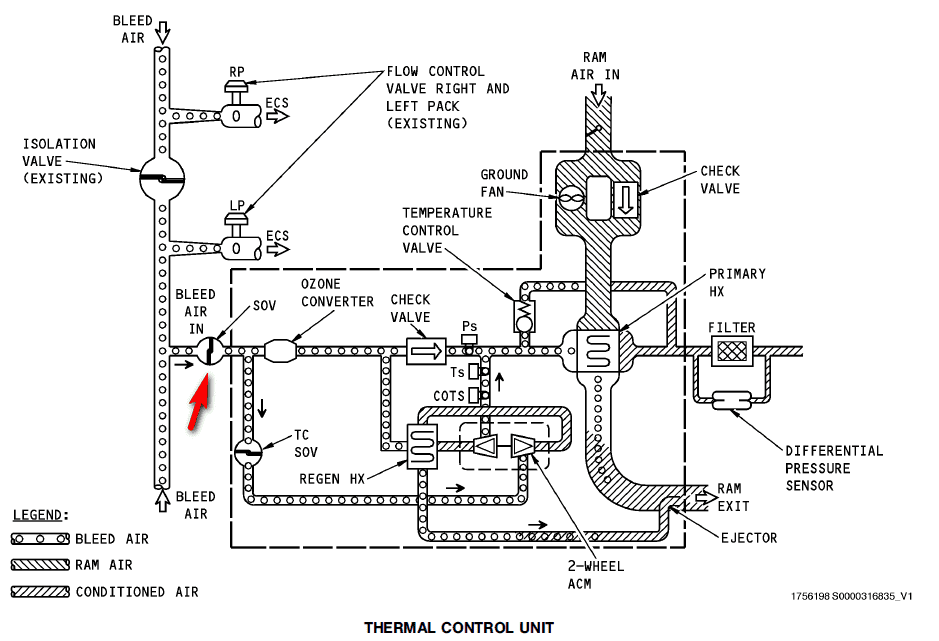
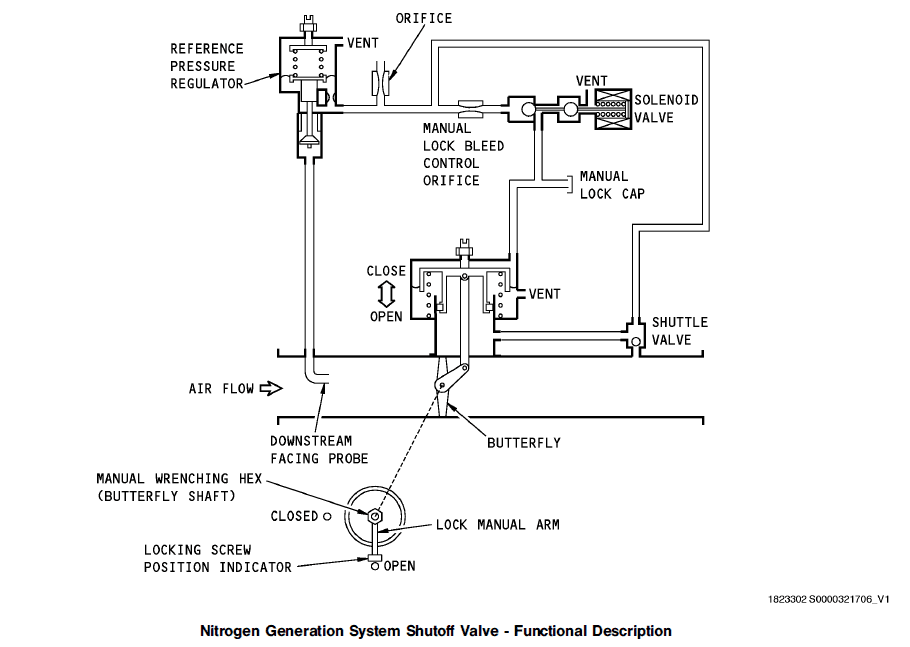
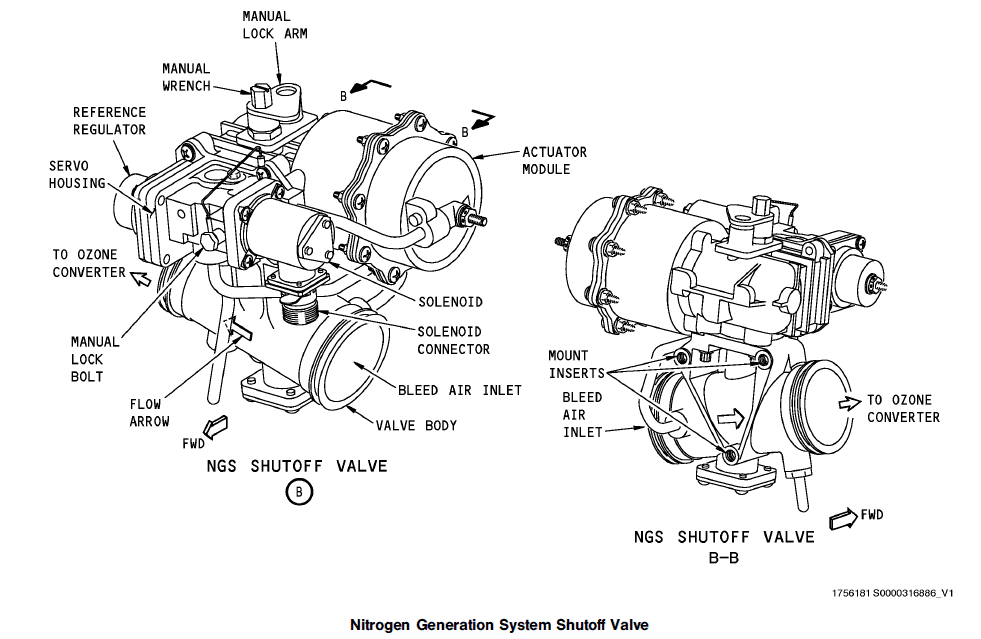
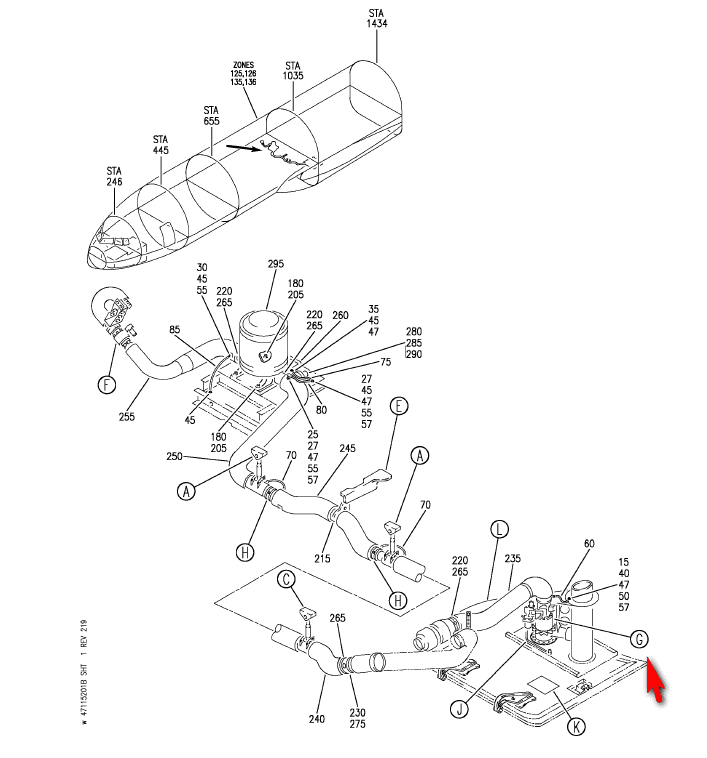
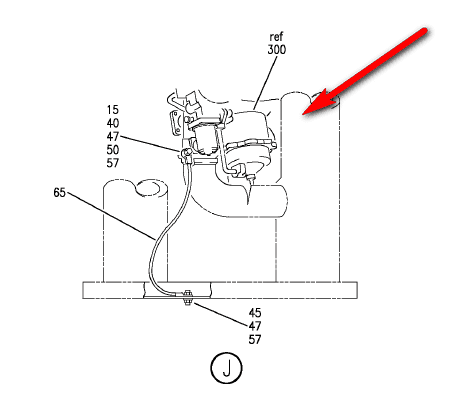
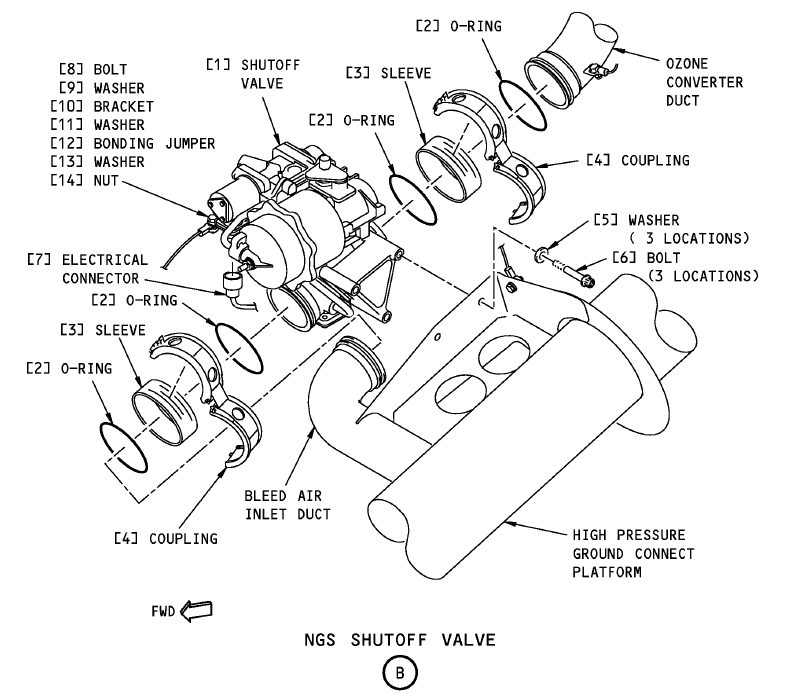
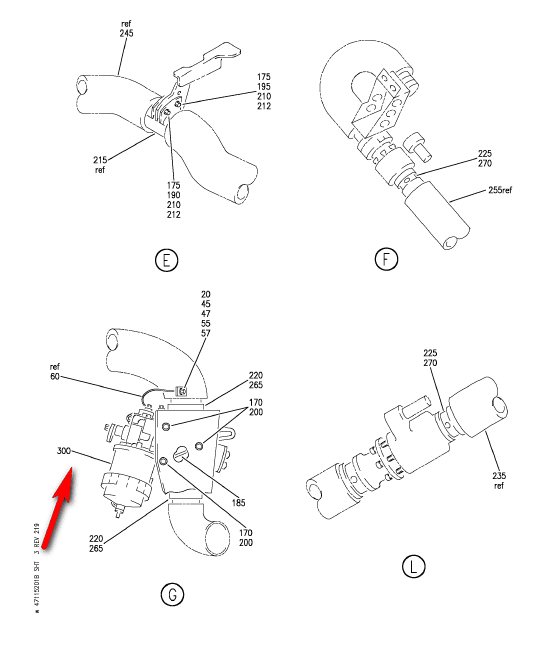
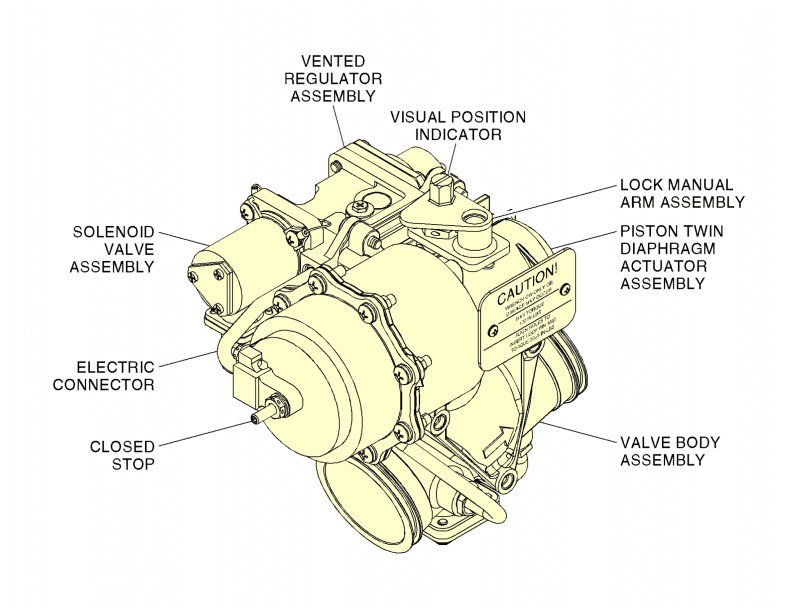
九、系统介绍/拓展知识
The Nitrogen Generation System (NGS) uses hot bleed air to make Nitrogen Enriched Air (NEA) for the center tank. The Thermal Control Unit (TCU) controls the bleed air pressure and temperature. The filter removes contamination that can damage the NGS and fuel system components. These are the components of the TCU:
氮气生成系统(NGS)利用热引气为中央储气罐制造富氮空气(NEA)。热控制单元(TCU)控制引气压力和温度。过滤器可去除可能损坏NGS和燃油系统部件的污染物。以下是TCU的部件:
* Nitrogen Generation System Shutoff Valve
氮气生成系统关断活门
* Ozone Converter
臭氧转换器
* Heat Exchanger
热交换器
* Filter
过滤器
* Ram Air Check Valve
冲压空气单向活门
* Temperature Control Valve
温控活门
* Fan
风扇
* Regenerative Heat Exchanger
再生热交换器
* Turbo Compressor
涡轮压缩机
* Bleed Air Check Valve
引气单向活门
* Turbo Compressor Shutoff Valve
涡轮压缩机关断活门
* Filter Differential Pressure Sensor
过滤器压差传感器
* Thermal Control Unit – Thermal Switch
热控制单元——热开关(感温开关)
* Thermal Control Unit – Temperature Sensor
热控制单元——温度传感器
* Thermal Control Unit – Pressure Sensor
热控制单元——压力传感器
The NGS is an inert gas system that decreases the flammability of the center tank. Fresh air contains approximately 78% nitrogen and 21% oxygen. The NGS separates the nitrogen and oxygen into nitrogen-enriched air (NEA) and oxygen-enriched air (OEA). NEA increases the nitrogen content and displaces the oxygen of the air. If you breathe air that does not have sufficient oxygen, health problems can occur. Obey the precautions in this procedure if you do maintenance in an area where you could breathe air that does not have sufficient oxygen.
NGS是一种惰性气体系统,可降低中央油箱的易燃性。新鲜空气中含有约78%的氮气和21%的氧气。NGS将氮气和氧气分离为富氮空气(NEA)和富氧空气(OEA)。NEA增加了空气中的氮气含量,并排除了氧气。如果呼吸的空气氧气不足,可能会导致健康问题。如果您在可能呼吸氧气不足空气的区域进行维护,请遵守本程序中的预防措施。
(3) The NGS components are found in the forward wing-to-body fairing on the left and right side of the airplane. Access to the thermal control unit (TCU) is through access door 191QL, while access to the air separation unit (ASU) is through access door 192QR. A 1.5 in. (3.8 cm) NEA duct is attached to the outlet side of the ASU. The distribution duct sends NEA from the ASU to the center tank.
NGS部件位于飞机左右两侧的前机翼与机壳体整流罩之间。可通过191QL号舱门进入热控单元(TCU),通过192QR号舱门进入空气分离单元(ASU)。一个1.5英寸(3.8厘米)的NEA管道连接到ASU的出口侧。分配管道将NEA从ASU输送到中央油箱。
(4) The usual operation of the NGS causes the air in the fuel tanks to have decreased oxygen for 24 hours. Do not breathe the air in a fuel tank unless that tank has sufficient air flow. Follow the procedures for fuel tank purging and entry in Chapter ATA 28, Fuel Systems. Stencils and placards tell you that it is dangerous to breathe air with low oxygen content. These are adjacent to fuel tank access doors, and areas where there could be air without sufficient oxygen.
NGS的常规操作会导致油箱中的空气含氧量在24小时内降低。除非油箱有足够的空气流通,否则不要呼吸油箱中的空气。请按照《燃料系统》第ATA 28章中的燃料箱清洗和进入程序进行操作。模板和标牌上写着:呼吸低氧空气是危险的。这些模板和标牌位于燃料箱检修舱门附近,以及可能存在低氧空气的区域。
(5) NEA that is generated by the ASU is routed safely to the center tank. The usual operation of the nitrogen generation system outside of the fuel tanks is free from concentrations of NEA. However, a duct leak, or component failure can cause NEA to go into areas outside of the fuel tanks. An NEA leak can cause a condition where the oxygen content of the air is decreased. Caution stencils and placards are installed on access doors adjacent to areas where potential NEA leakage can occur.
由空分装置产生的NEA被安全地输送到中央油箱。在油箱外,氮气生成系统的常规操作不会产生NEA浓度。然而,管道泄漏或组件故障会导致NEA进入油箱外的区域。NEA泄漏会导致空气中的氧气含量降低。在可能发生NEA泄漏的区域附近的检修舱门上安装了注意提示和警告牌。
(6) If you make a decision not to do this recommended procedure, you must have an approved alternate procedure. Make sure the conditions during maintenance operations give sufficient protection to the persons and equipment used in this procedure. It is possible that local fire codes, and standards make it necessary to use more restrictive procedures or more procedures than those given in this procedure.
如果您决定不执行此推荐程序,则必须制定经批准的替代程序。确保维护操作期间的条件能够充分保护执行此程序的人员和设备。根据当地消防法规和标准,可能需要使用比本程序中规定的更严格的程序或更多的程序。
Physiological Effects of a Low Oxygen Content Environment
低氧环境对生理的影响
(1) NEA increases the nitrogen content and decreases the oxygen of the air. If you breathe air without sufficient oxygen, it can have dangerous and immediate effects. Make sure that you read and obey the warning placard in areas where you can find nitrogen enriched air. Read and obey the warnings in the maintenance instructions. The NGS equipment is dangerous because you cannot see or smell nitrogen. The equipment decreases the oxygen in the air to a condition that is not health-safe. It can cause hypoxia. Hypoxia can make you dizzy, nauseous, unconscious, and can kill you.
NEA会增加空气中的氮含量并减少氧气含量。如果呼吸的空气氧气不足,可能会立即产生危险。在空气中富含氮气的地方,请务必阅读并遵守警告牌上的内容。请阅读并遵守维护说明中的警告。NGS设备具有危险性,因为您无法看到或闻到氮气。该设备会将空气中的氧气含量降低到不利于健康的状态。它会导致缺氧。缺氧会使人头晕、恶心、昏迷,甚至死亡。
(a) A person that breathes air with a low oxygen content cannot sense that the oxygen level is too low. The victim can become unconscious before the person is aware of the low oxygen content air.
吸入含氧量低的空气的人无法感知到氧气含量过低。受害者可能在意识到空气含氧量低之前就失去了知觉。
(b) An organic vapor filter respirator will not help you breathe in a low oxygen environment.
有机蒸汽过滤呼吸器无法帮助您在低氧环境中呼吸。
